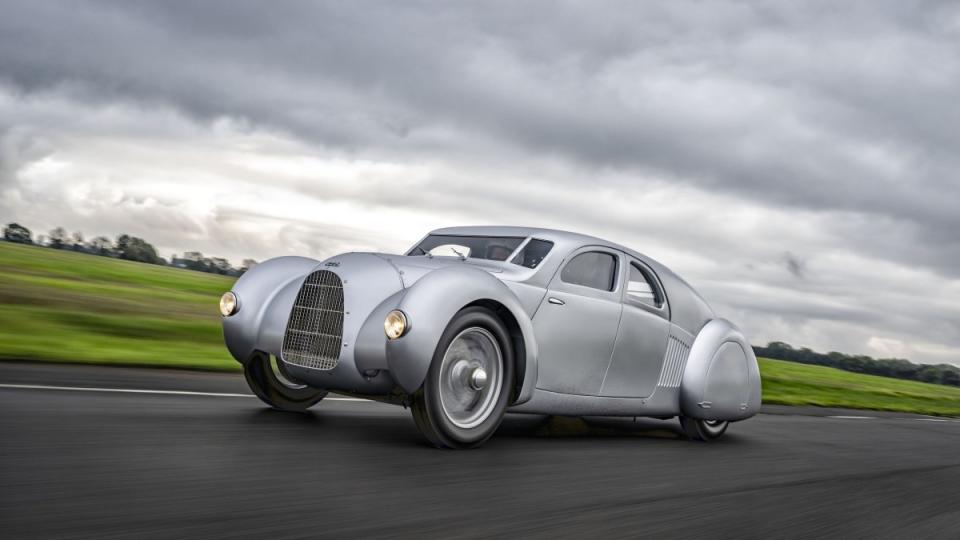Audi recreates 16-cylinder super-sedan designed in 1930s but never built

Auto Union — one of the companies that Audi traces its roots to — set several world records in the 1930s with a series of race cars grouped under the Silver Arrow label. These cars were designed exclusively for track use, but the brand also envisioned a street-legal version called Type 52 that used the same 16-cylinder engine. The sedan was never built, so Audi dusted off decades-old blueprints to make it a reality.
Type 52 was an internal designation; Audi notes that the model would have likely been launched as the Schnellsportwagen, which means "fast sports car" in German. It's a fitting name: Ferdinand Porsche's design office started the project in late 1933 and planned a sedan built around a de-tuned version of the supercharged, 4.4-liter 16-cylinder engine that powered the Type 22 race car. In spite of the lower compression, the engine was projected to develop about 200 horsepower and 322 pound-feet of torque, which was enough for a top speed of 124 mph. Had it gone on sale, the Schnellsportwagen would have stood proud as one of the fastest and most powerful cars of its era.
Visually, the Schnellsportwagen featured an aerodynamic, wing-shaped silhouette characterized by an unusually long wheelbase required to accommodate the massive mid-mounted engine. It had four rear-hinged doors, and the interior layout placed the driver front and center and the two passengers on either side — this layout made the McLaren F1 famous nearly 60 years later. Auto Union even fitted a small trunk.
Auto Union's plans to build a test car were canned when the project was abandoned in 1935, so the Schnellsportwagen was consigned to the pantheon of automotive history. Recreating it using archive documents and design sketches was easier said than done, especially since none of the people that worked on the project are still alive. Audi commissioned an England-based restoration shop named Crosthwaite & Gardner to tackle the project. Every part of the car had to be built from scratch including the chassis, the engine, and the body panels.

 Yahoo Autos
Yahoo Autos 
